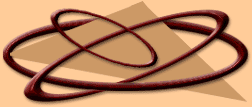|

In the year 17 BCE, King Yuri of Kokuryo was saddened by the quarreling of his two wives. The Chinese sisters, Hwahi and Chihi,
grew so jealous of each other that one finally returned to China. I don't know what happened to the other, but the grieving
Yuri, yearning for better times, wrote a love song in Chinese about two birds he observed courting in a nearby tree. This
Song of Yellow Birds is the earliest remaining written evidence of the Korean poetic tradition. Poetry and song have
flourished in Korea ever since.

In the 6th century, scholars developed Yidu, an attempt to adapt athe predominant Chinese writing script by mixing
in certain characteristics of the Korean oral vocabulary. The result was a kind of pidgin Chinese which made both reading
and writing much easier. This development fostered a great flowering of poetry called Hyangga (the home song) which
became very popular.

Though much of the Hyangga and other later developments are often sijo-like in structure, the precise origin of the lyric
verse we now call sijo is not clear. Some point to developments as early as the 9th century, others the 11th. It is
clear, however, that by the 13th century it had come into its own as the predominant lyric poetry of Korea.
Sijo continued to be refined both in style and content, especially after the introduction of Hanguel, the Korean alphabet,
in 1446. The 15th and 16th centuries saw its highest development, before internal turmoil and invasions from Japan and Mongolia
hastened its decline.

Click in the column to the right to sample
some of the greatest masters of the Classical Sijo.

To learn more about sijo, click here.
|


